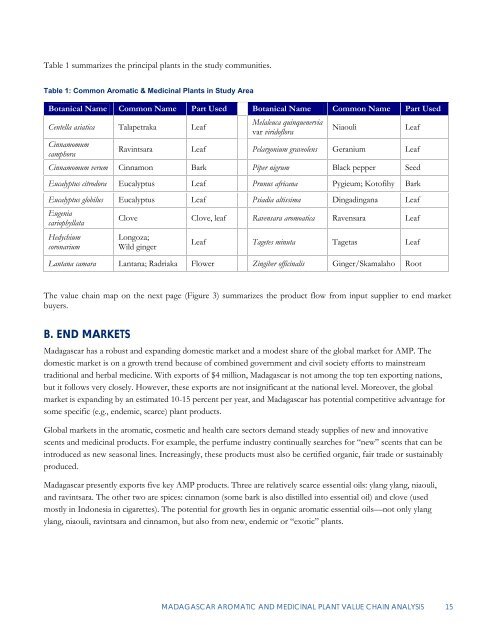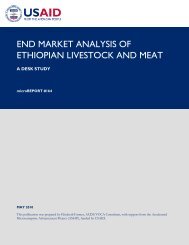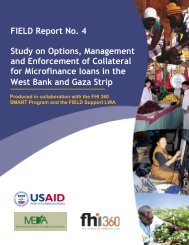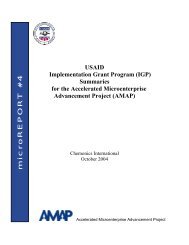Madagascar Aromatic and Medicinal Plants Value - Microlinks
Madagascar Aromatic and Medicinal Plants Value - Microlinks
Madagascar Aromatic and Medicinal Plants Value - Microlinks
Create successful ePaper yourself
Turn your PDF publications into a flip-book with our unique Google optimized e-Paper software.
Table 1 summarizes the principal plants in the study communities.<br />
Table 1: Common <strong>Aromatic</strong> & <strong>Medicinal</strong> <strong>Plants</strong> in Study Area<br />
Botanical Name Common Name Part Used Botanical Name Common Name Part Used<br />
Centella asiatica Talapetraka Leaf<br />
Melaleuca quinquenervia<br />
var viridoflora<br />
Niaouli Leaf<br />
Cinnamomum<br />
camphora<br />
Ravintsara Leaf Pelargonium graveolens Geranium Leaf<br />
Cinnamomum verum Cinnamon Bark Piper nigrum Black pepper Seed<br />
Eucalyptus citrodora Eucalyptus Leaf Prunus africana Pygieum; Kotofihy Bark<br />
Eucalyptus globilus Eucalyptus Leaf Psiadia altissima Dingadingana Leaf<br />
Eugenia<br />
cariophyllata<br />
Clove Clove, leaf Ravensara aromoatica Ravensara Leaf<br />
Hedychium<br />
coronarium<br />
Longoza;<br />
Wild ginger<br />
Leaf Tagetes minuta Tagetas Leaf<br />
Lantana camara Lantana; Radriaka Flower Zingiber officinalis Ginger/Skamalaho Root<br />
The value chain map on the next page (Figure 3) summarizes the product flow from input supplier to end market<br />
buyers.<br />
B. END MARKETS<br />
<strong>Madagascar</strong> has a robust <strong>and</strong> exp<strong>and</strong>ing domestic market <strong>and</strong> a modest share of the global market for AMP. The<br />
domestic market is on a growth trend because of combined government <strong>and</strong> civil society efforts to mainstream<br />
traditional <strong>and</strong> herbal medicine. With exports of $4 million, <strong>Madagascar</strong> is not among the top ten exporting nations,<br />
but it follows very closely. However, these exports are not insignificant at the national level. Moreover, the global<br />
market is exp<strong>and</strong>ing by an estimated 10-15 percent per year, <strong>and</strong> <strong>Madagascar</strong> has potential competitive advantage for<br />
some specific (e.g., endemic, scarce) plant products.<br />
Global markets in the aromatic, cosmetic <strong>and</strong> health care sectors dem<strong>and</strong> steady supplies of new <strong>and</strong> innovative<br />
scents <strong>and</strong> medicinal products. For example, the perfume industry continually searches for “new” scents that can be<br />
introduced as new seasonal lines. Increasingly, these products must also be certified organic, fair trade or sustainably<br />
produced.<br />
<strong>Madagascar</strong> presently exports five key AMP products. Three are relatively scarce essential oils: ylang ylang, niaouli,<br />
<strong>and</strong> ravintsara. The other two are spices: cinnamon (some bark is also distilled into essential oil) <strong>and</strong> clove (used<br />
mostly in Indonesia in cigarettes). The potential for growth lies in organic aromatic essential oils—not only ylang<br />
ylang, niaouli, ravintsara <strong>and</strong> cinnamon, but also from new, endemic or “exotic” plants.<br />
MADAGASCAR AROMATIC AND MEDICINAL PLANT VALUE CHAIN ANALYSIS 15





